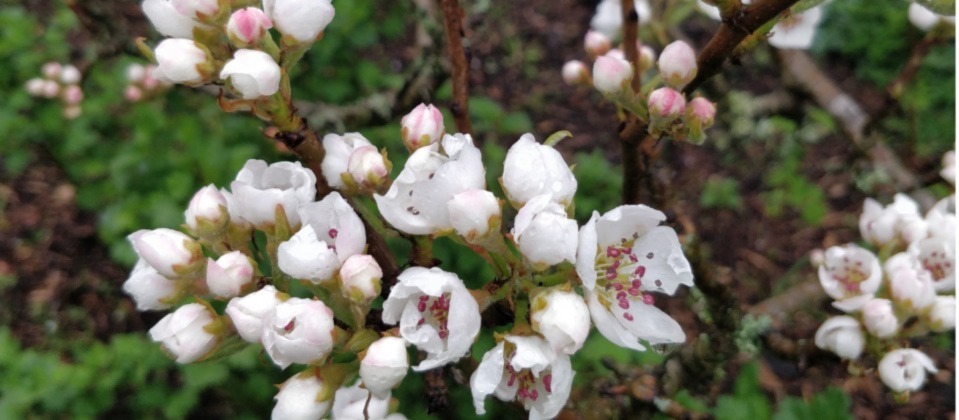A lot of poetic lines spring to mind about this time of year – and not irrelevantly either, before you click somewhere else! ‘April is the cruellest month’ (TS Eliot): for us gardeners, that’s probably about continuing frosts and chilly nights. ‘Oh to be in England now that April’s here’ (Robert Browning): and you could be enjoying purple sprouting broccoli, rhubarb and salad leaves if you were organised last year. ‘When April with its sweet showers has pierced the drought of March….then people long to go on pilgrimage’ (Geoffrey Chaucer) – we need to resist the temptation of holidays away and start tending our plots in earnest. We can catch up with late sowings for a while, and sometimes the weather demands we sensibly do so, but this really is the crucial time for your plot.
If you got a good start by preparing the land over the last few months, you will have a lovely fine warmed moist soil ready for sowing seeds. (It’s the soil that matters most of all, not the structures you may fancy installing.) If not, and if you’re new to your patch of land, then give the beds a good hoe down and rake them finely. Some crops are hungrier than others – broad beans, peas, chards and spinaches will benefit most from your rotted compost. Fast growing leafy salads, roots like carrots, parsnips, leeks and beetroot will do okay without enrichment, unless your soil is very impoverished. And it’s a good idea to be aware of grouping your crops in this kind of way, so that you can establish a rotation, a cycle of growing, where you don’t grow the same things on the same patch in subsequent years.
All those crops can now be sown direct outside. Water the drills, the little channels you make with your hoe for the seed, before you sow; that way the seeds don’t get washed away but they have a good moist start to get them germinated. Protecting the seedlings from slugs and snails is very necessary – but even some of the pellets approved for organic cultivation have harmful effects on worms, so try wool pellets as deterrent and encourage birds to your plot. Even those of us who’ve been growing for years still have failures – parsnips, for instance, are notoriously hard to germinate. The most reliable way is to save your own seed from a parsnip you leave deliberately to flower and produce fresh seeds. And buy all your seeds from a company that stores them well; while brassica (cabbage family) seed will keep a few years if dry and cool, parsnips just won’t. (More on brassiacs next time….)
Browning has his ‘blossomed pear tree in the hedge’ blooming ‘when May follows’, but you’ll likely find that yours is lovely with flowers this month. Lots of folk think to get an apple for their plot, but far fewer choose a gorgeous pear; there are many varieties and they really are delicious, warm and ripe and juicy in the autumn. If you haven’t got much space, you could try one espaliered, grown in vertical layers flat to a wall, fence or wires; look out for pruning workshops later in the year to learn how to do this. Pears attract all sorts of interesting beneficial insects, but they may also be susceptible to pear gall midge which distorts and ruins the little fruits as they set; check for blackened areas that contort the smooth swell of the fruitlets, and pick those off as soon as you see them and dispose of them well away from other trees. You’ll still have plenty of fruit to enjoy.
Plotlines, written by one of our York allotmenteers, is a new twice monthly blog aimed at anyone who would like some guidance about growing on an allotment.


